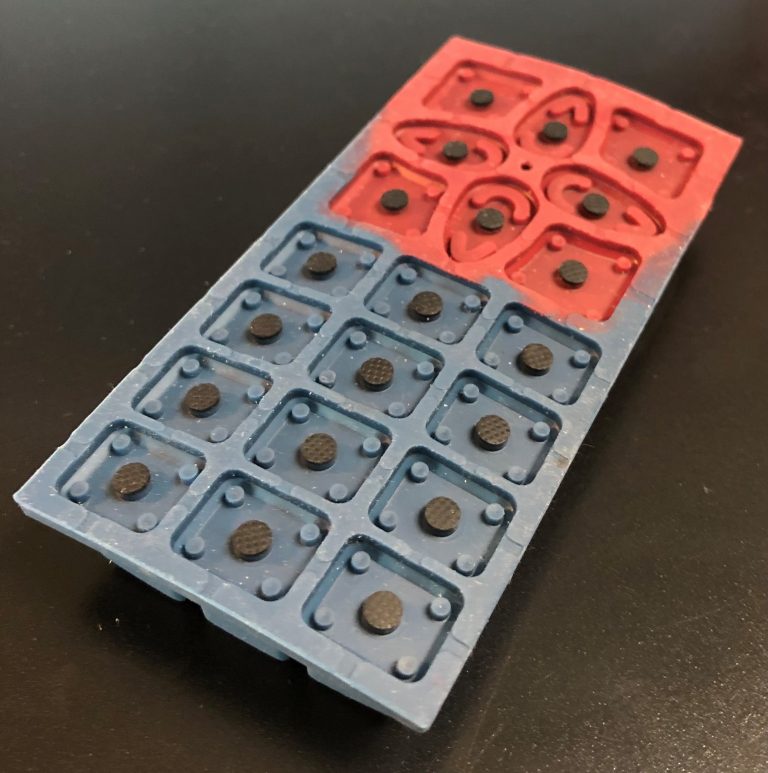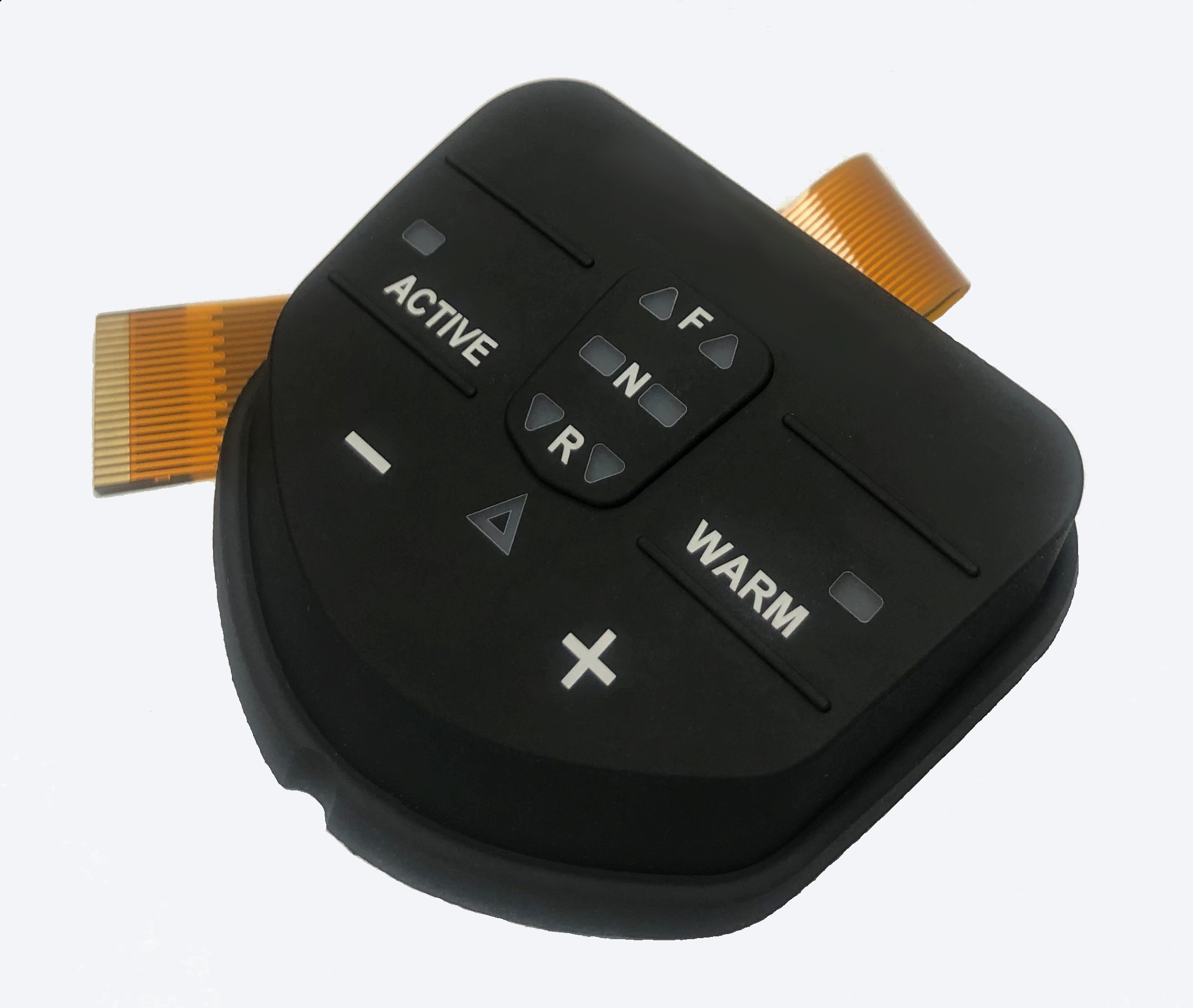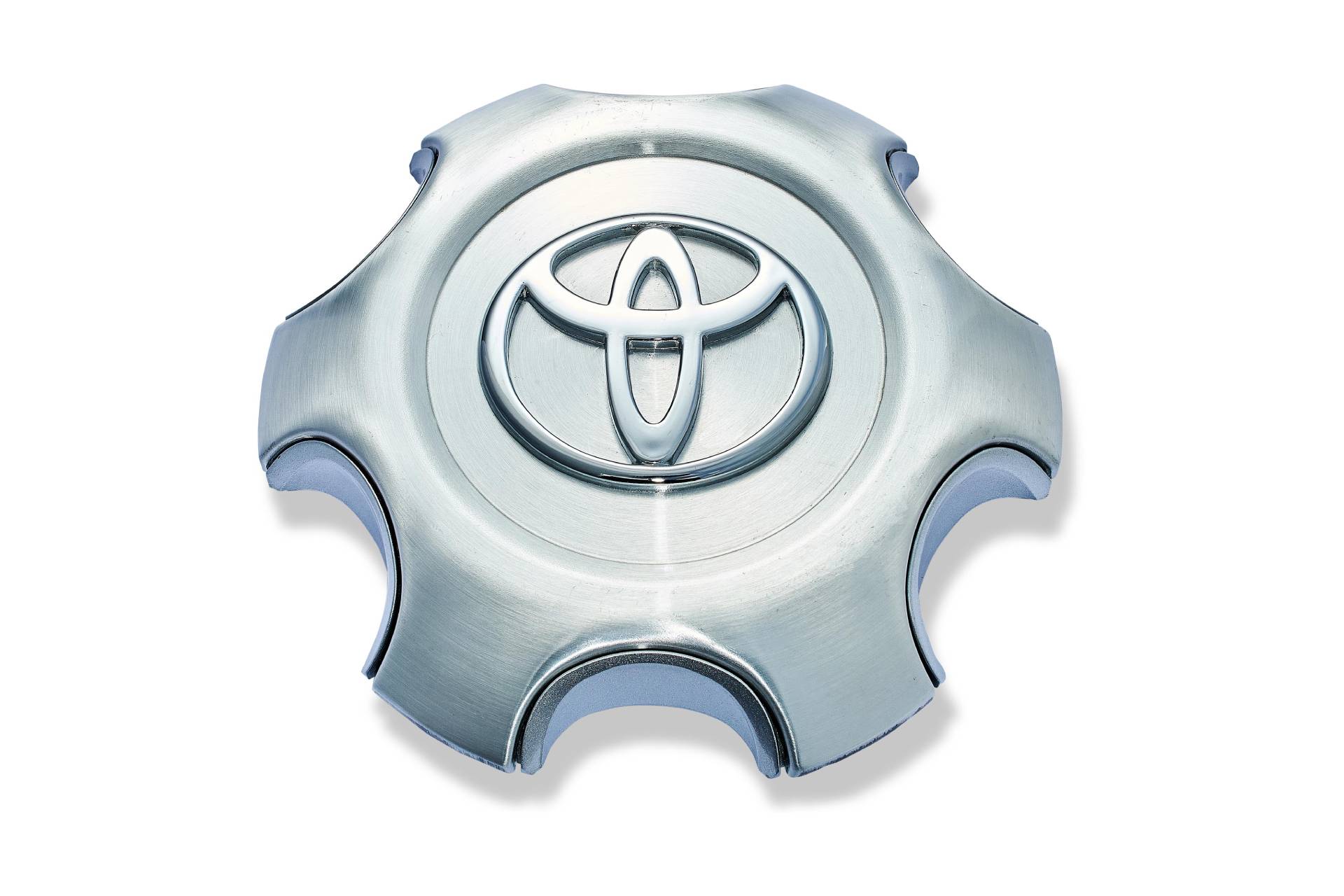A Comprehensive Guide to the Manufacturing and Handling of Rubber Keypads for Ideal Efficiency
The manufacturing and handling of rubber keypads play an essential function in their efficiency and use. Material selection, design accuracy, and advanced production strategies considerably influence their durability and efficiency. Understanding these aspects is important for developing high-quality products. As numerous developments emerge in this area, discovering their ramifications might disclose new criteria for performance and user experience. What vital aspects will shape the future of rubber keypads?
Understanding Rubber Keypads: Products and Types
Rubber keypads are vital parts in numerous gadgets, using an equilibrium of sturdiness and tactile feedback. These keypads are mainly made from silicone or synthetic rubber, materials picked for their flexibility and resilience. Silicone rubber, particularly, is preferred for its excellent temperature level resistance and long life, making it excellent for numerous applications, from consumer electronic devices to industrial equipment.
There are a number of sorts of rubber keypads, consisting of dome button keypads, which make use of a dome-shaped mechanism that provides responsive comments when pushed. Additionally, there are additionally level keypads, which include a smooth surface and are usually made use of in push-button controls and clinical gadgets. The selection of material and kind influences the keypad's performance, feel, and total individual experience. Recognizing these facets is crucial for designers and makers intending to create effective and trustworthy interfaces in their products.
The Manufacturing Refine: From Design to Manufacturing
The production procedure of rubber keypads includes several important stages, starting with design and ending with production. Developers create in-depth specs and models, ensuring the keypad satisfies functional and aesthetic needs. Computer-aided style (CAD) software is frequently utilized to visualize the layout and functions prior to proceeding.
When the design is completed, product selection is essential, with options typically including silicone or natural rubber. In the following phase, mold and mildews are developed based upon the approved styles, which will certainly form the keypads throughout production.
Following mold production, the production phase commences, where rubber is blended with additives to boost performance. The mix is after that poured right into molds and based on heat and stress, enabling it to cure and strengthen.
The completed keypads go through top quality checks to validate they fulfill well established criteria, complied with by product packaging for circulation. This comprehensive procedure guarantees peak efficiency in the last product.
Trick Methods in Rubber Molding
In the domain name of rubber keypads, different molding methods play a pivotal function in figuring out the high quality and functionality of the end product. One widespread approach is compression molding, where raw rubber is placed in a warmed mold and pressure is used, permitting reliable automation and uniformity. An additional considerable technique is injection molding, which includes infusing heated rubber into a mold and mildew, supplying greater precision and complex forms. Transfer molding, a crossbreed of both approaches, is additionally utilized, particularly for detailed designs, as it combines the advantages of both processes. Furthermore, fluid silicone rubber (LSR) molding is obtaining traction as a result of its versatility and sturdiness, making it perfect for high-performance applications. Each method has one-of-a-kind features, influencing elements such as cycle time, material waste, and manufacturing prices. Choosing the proper molding strategy is necessary for accomplishing peak performance in rubber keypads.
Surface Finishing and Texturing Options
Surface finishing and texturing alternatives play an essential function in boosting the tactile experience and aesthetic allure of rubber keypads. Makers employ various techniques to develop unique surface area qualities that impact user communication and item layout. Common ending up techniques consist of matte, glossy, and satin coatings, each supplying different visual results and hold degrees. Texturing choices, such as raised patterns, grooves, or stippling, even more enhance capability by enhancing grip and minimizing slippage during use.
In addition, particular appearances can be customized to satisfy ergonomic needs, supplying convenience during long term usage. The option of surface area coatings and textures can be affected by the intended application of the keypad, whether it be for customer electronic devices, automotive controls, or commercial tools. Ultimately, cautious factor to consider of these options contributes considerably to user satisfaction and general item efficiency, making them important aspects in the design and production procedure of rubber keypads.
Top Quality Control Measures in Rubber Keypad Production
Quality control actions in rubber keypad manufacturing are critical for ensuring item dependability and performance. informative post These measures encompass material option requirements, extensive testing procedures, and rigid last examination criteria. Together, they develop a comprehensive framework that helps makers copyright quality throughout the production process.

Product Choice Standards
Selecting the ideal materials for rubber keypads is necessary, as it straight impacts their user, longevity, and performance experience. Secret standards for material option include tensile toughness, durability, and ecological resistance. The choice of rubber substance, such as silicone or thermoplastic elastomer (TPE), plays an essential function in attaining wanted responsive responses and long life. Additionally, variables like chemical compatibility, temperature security, and UV resistance must be considered to guarantee optimal efficiency in different applications. Suppliers must also examine the convenience of processing and cost-effectiveness of materials, stabilizing top quality with budget restrictions. Eventually, the right product option not just boosts the keypad's performance however likewise adds to overall item top quality and consumer contentment.
Checking Treatments Executed
After figuring out the ideal products for rubber keypads, extensive testing treatments are applied to confirm that the end products satisfy sector standards and client assumptions. These treatments normally consist of mechanical testing, which evaluates the durability and elasticity of the rubber under different conditions. Furthermore, ecological screening analyzes the keypads' efficiency under temperature variations, moisture, and direct exposure to chemicals. Electric testing validates the keypads function appropriately with digital parts, validating responsiveness and conductivity. In addition, responsive responses is examined to ensure individual contentment. These considerable screening procedures are crucial in recognizing any disparities or flaws prior to automation, ultimately enhancing the reliability and performance of rubber keypads in their desired applications.

Final Inspection Standards
Thorough last assessment criteria are crucial in rubber keypad manufacturing to ensure that each device meets the defined requirements for capability and look. This process commonly involves aesthetic assessments to recognize any surface issues, such as staining or imperfections. Additionally, tactile examinations ascertain that the keypads react accurately to touch, preserving the called for level of sensitivity. Durability tests might additionally be carried out, simulating extended use to verify the long life of the keypad under different problems. Moreover, adherence to industry guidelines and customer specs is verified Visit This Link to preserve high quality guarantee. By executing these rigorous examination actions, suppliers can significantly reduce the risk of defects, guaranteeing that the end product is dependable and meets customer assumptions, inevitably enhancing customer contentment.
Technologies in Rubber Keypad Technology
As modern technology proceeds to progress, developments in rubber keypad technology are reshaping interface throughout various sectors. One substantial innovation is the integration of capacitive touch sensing units within rubber keypads, enabling an extra receptive and functional user experience. This innovation makes it possible for customers to connect with devices through touch, enhancing capability without sacrificing the responsive comments that rubber keypads are understood for.
In addition, improvements in product solutions have resulted in the advancement of even more resilient, weather-resistant rubber, making keypads suitable for commercial and outdoor use. Improved printing strategies likewise enable high-resolution graphics and backlighting alternatives, boosting exposure and aesthetic charm.

Advancements in making procedures, such as 3D printing, are making it possible for customized styles and quick prototyping, improving manufacturing timelines. These technologies jointly contribute to much more reliable and user-friendly rubber keypads, ensuring they meet the needs of modern-day applications while preserving their core advantages.
Best Practices for Layout and Capability
Creating effective rubber keypads needs careful analysis of both appearances and functionality. Rubber Keypads. A properly designed keypad should stabilize ergonomic principles with visual attract improve customer experience. Trick variables include size, form, and spacing of buttons, guaranteeing they are very easy to press while preventing accidental activation. Utilizing contrasting colors and textures can improve visibility and responsive responses, assisting customers in comparing keys
Additionally, the option of products plays a vital function; premium rubber compounds can boost toughness and resistance to use. It is also vital to take right into account the combination of attributes such as backlighting and personalized graphics, which can boost usability in numerous atmospheres.
Prototyping and customer screening are very useful in the style process, allowing for changes based on real-world comments. By adhering to these best techniques, makers can create rubber keypads that not only look enticing however likewise satisfy the practical needs of customers efficiently.
Frequently Asked Inquiries
How Do I Select the Right Rubber Product for My Keypad?
To choose the ideal rubber material for a keypad, one need to take into consideration variables such as sturdiness, ecological resistance, tactile responses, and compatibility with the designated application, ensuring suitable efficiency and user fulfillment in numerous conditions.
What Are the Environmental Influences of Rubber Keypad Manufacturing?
Rubber keypad production can lead to ecological influences such as deforestation for all-natural rubber resources, air pollution from chemical procedures, and waste generation. Lasting techniques and products can mitigate some of these negative results on ecosystems.
Can Rubber Keypads Be Recycled or Reused?
Rubber keypads can be reused, but the procedure depends upon the specific materials utilized in their production. Reusing them in different applications is additionally possible, adding to lose decrease and promoting sustainability in making practices.
What Is the Average Life Expectancy of a Rubber Keypad?
The average lifespan of a rubber keypad normally varies from 5 to one decade, relying on usage, environmental factors, and maintenance. Routine treatment can prolong its functionality, while excessive wear may shorten its resilience.
Exist Any Type Of Health And Wellness Problems Associated to Rubber Keypad Products?
There are prospective health and wellness issues associated with rubber keypad materials, including allergies to specific chemicals and irritants made use of in see this site manufacturing. Proper handling and awareness of product make-up can alleviate these risks for users.
There are numerous kinds of rubber keypads, consisting of dome switch keypads, which utilize a dome-shaped mechanism that offers tactile feedback when pressed. Picking the proper materials for rubber keypads is crucial, as it straight impacts their individual, sturdiness, and performance experience - Rubber Keypads. After figuring out the appropriate materials for rubber keypads, rigorous screening procedures are applied to verify that the last products satisfy market standards and client assumptions. Rubber keypad manufacturing can lead to environmental impacts such as logging for natural rubber sources, air pollution from chemical procedures, and waste generation. Rubber keypads can be recycled, yet the procedure depends on the details products used in their production